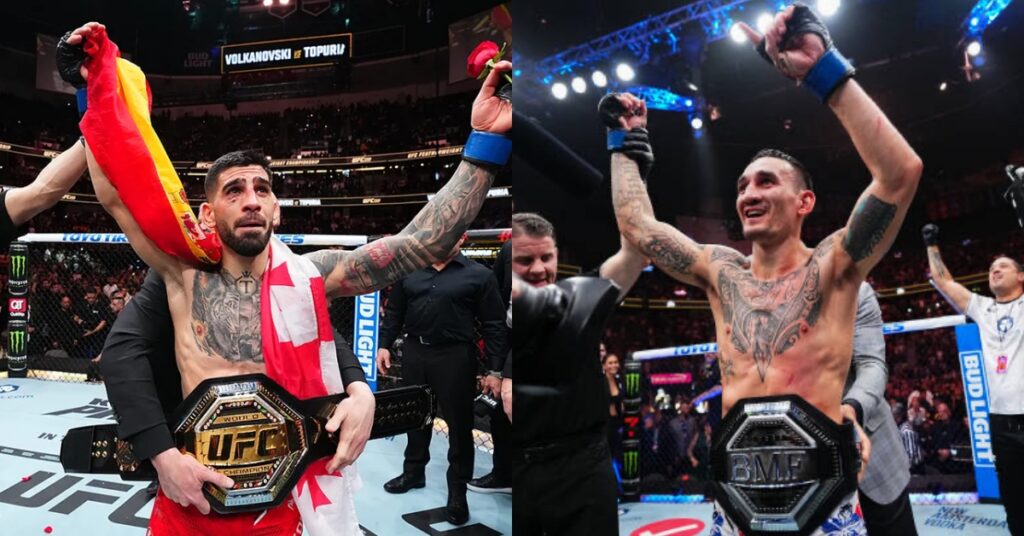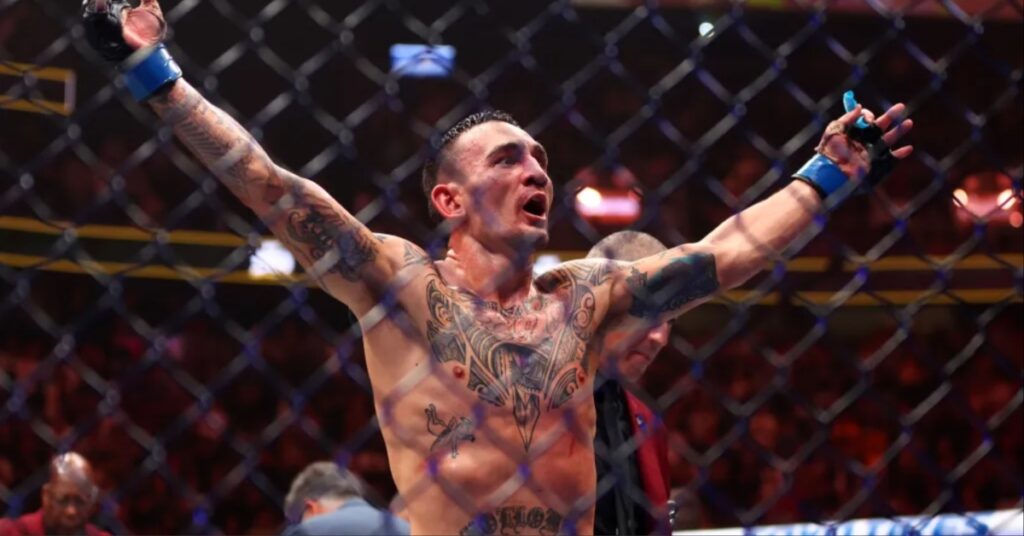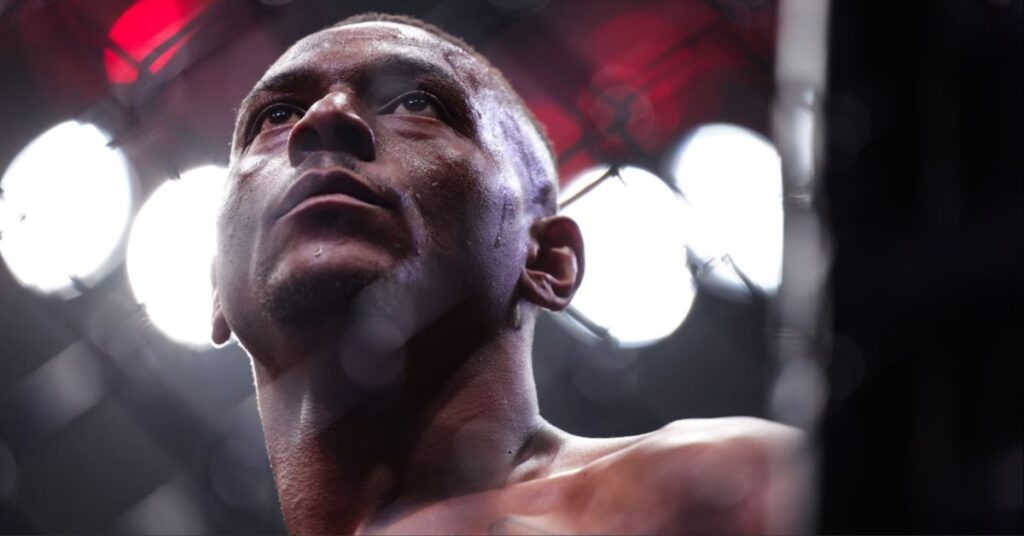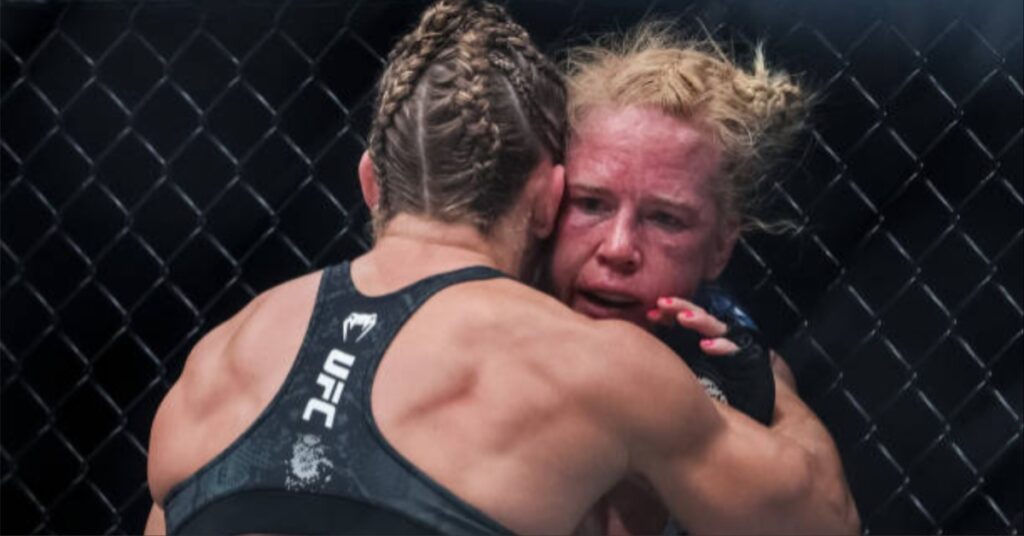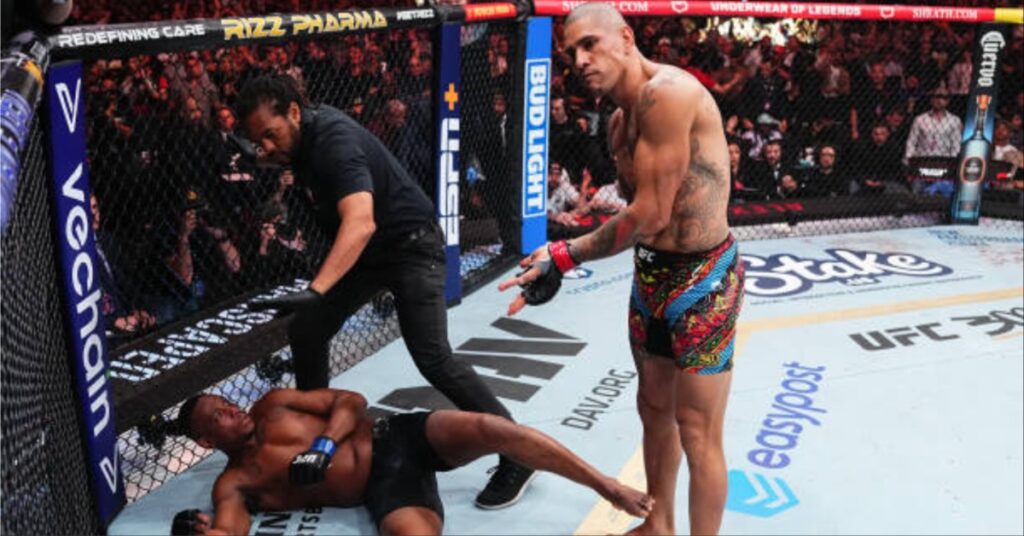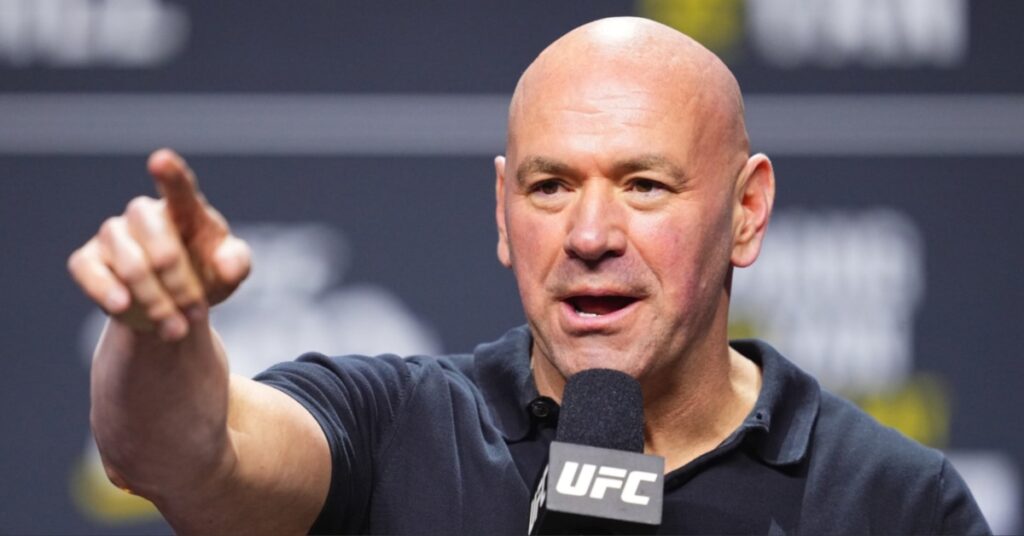Who’s the Real “Father of MMA”? — 10 Fighters More Deserving of the Title Than Bruce Lee
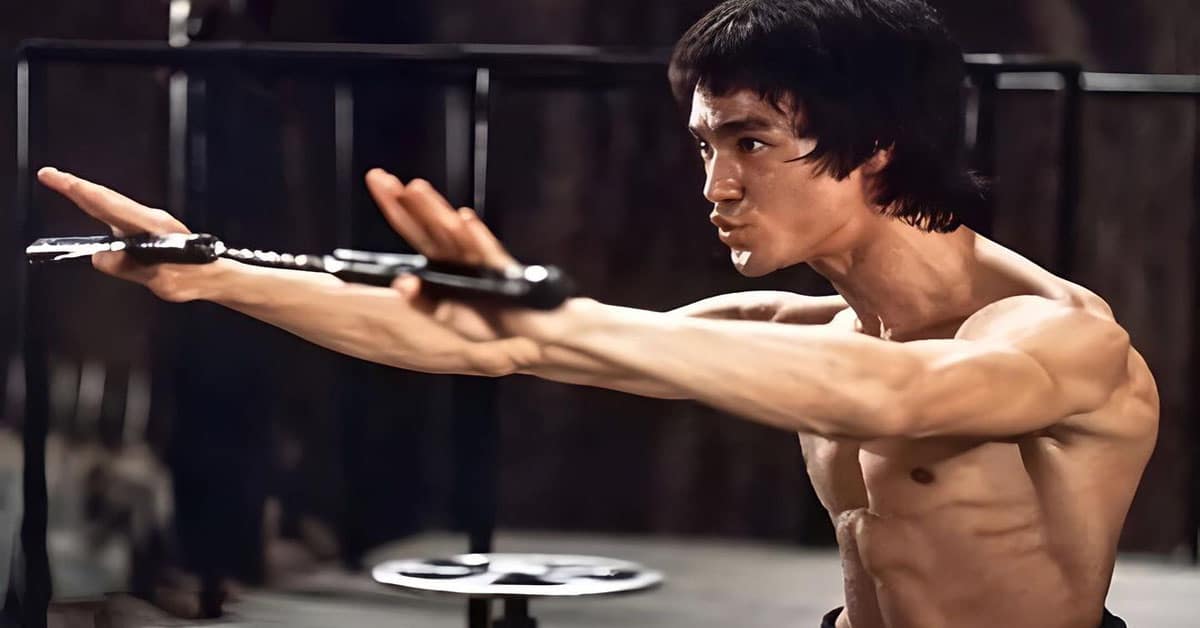
By Seth Falvo
Though current bantamweight champion TJ Dillashaw will not be a playable character in EA Sports UFC when it hits the shelves two weeks from now, Bruce Lee will be. Perhaps equally ridiculous is that Bruce Lee isn’t being treated as a novelty addition to the roster, but rather as “the father of Mixed Martial Arts,” something Dana White has also called him. Giving credit to only one person for the creation of MMA is absurd enough, but painting Bruce Lee as that person is just preposterous.
Then again, it really isn’t hard to understand why Zuffa would want to make someone like Bruce Lee an ambassador for our sport. Lee was — and still is — an instantly recognizable celebrity. His body was ripped and athletic. He knew how to wrestle, sure, but also understood that most people would rather watch him throw flashy kicks. His affirmations were deep enough to look good on playing cards and posters, but not too profound for the bros curling in the squat rack to comprehend. In other words, he appeals to a much larger audience than Edward William Barton-Wright and Tommy Tanaka do.
Even with all that in mind, there are figures in combat sports history who not only did more to mold modern MMA than Bruce Lee, but can also be worked into the charmingly revisionist Zuffa account of history just as well. The following list will focus on the accomplishments of these individuals, as well as the arguments for why they should be repackaged as the fathers of MMA. Let’s start with the oldest candidate, and work our way towards the modern era…
Contents
Dioxippus

Martial Art: Pankration, an Ancient Greek combat sport that allowed punches, kicks, takedowns, joint locks and chokeholds (sound familiar?).
Notable Achievements: Dioxippus of Athens was not only the toughest fighter in Ancient Greece, but arguably the toughest fighter to ever live. In his prime, he was so famous for taking out all challengers that he won an Olympic championship by default (akoniti) because nobody was willing to fight him; he’s the only person to ever win an Olympic wreath in pankration this way. He famously defeated one of Alexander the Great’s best soldiers, Coragus, despite the fact that Coragus wore full armor and had several weapons to use against the naked Dioxippus; you read that correctly, he showed up naked to a fight against a guy in full body armor and won. After the bout, Dioxippus was framed for theft, and chose to take his own life rather than be punished for a crime he did not commit.
Why It Makes Sense: Dana White and Joe Rogan like to remind us that “fighting is in our DNA.” Dioxippus is proof of this.
Bill “The Butcher” Poole

Martial Arts: Bare-knuckle Boxing, Rough & Tumble (aka “Gouging”)
Notable Achievements: Let’s be perfectly clear: Bill “The Butcher” Poole was not an honorable man. The leader of both The Bowery Boys and the Know Nothing political movement, Poole terrorized the streets of New York City while spreading anti-Irish, anti-Catholic hate-speech throughout the mid-nineteenth century. He took part in Rough & Tumble — more accurately called “gouging” due to the fact that eye-gouging was not only allowed, but encouraged — contests as well as bare-knuckle boxing matches. Poole beat up heavyweight boxing champion John Morrissey so badly that The New York Daily Times wrote “[Morrissey] presented a shocking spectacle, and scarcely could any of his friends recognize him.” Though Morrissey’s men would shoot Poole in the chest over the incident, “The Butcher” lived for fourteen days with a bullet lodged in his heart. According to legend, his final words were “Good-bye, boys, I die a true American.”
Why It Makes Sense: Was Bill “The Butcher” Poole a total scumbag? Yes — and that’s the entire point. Since Zuffa history depicts MMA as something that only the most vile, deplorable people took part in until Dana White invented rules (obviously not true, but history is written by the winners), painting Poole as the original MMA fighter actually makes sense.
Evan “Strangler” Lewis

Martial Art: Catch Wrestling
Notable Achievements: Back when professional wrestling was actually a legitimate competition, Evan “Strangler” Lewis was one of the most feared men to lace up the boots. “Strangler” ran through his competition with frightening ease, masterfully utilizing the stranglehold — a technique you more than likely recognize as the rear-naked choke — to secure victory. His win over Ernest Roeber in a best-of-five match on March 2, 1893 made him the first American to become a world champion wrestler. Lewis would defend the title for two years before losing it to Martin “Farmer” Burns, and was inducted into The Professional Wrestling Hall of Fame in 2009. That he wasn’t exactly known for his sportsmanship is another story for another time, as is the way that many wrestling fans confuse him with Ed “Strangler” Lewis.
Why It Makes Sense: He was the blueprint for every freakishly athletic wrestler to ever fight inside the Octagon, from Ken Shamrock to Cain Velasquez and all points in between.
Helio Gracie

Martial Arts: Brazilian Jiu-Jitsu, Judo
Notable Achievements: Helio Gracie became a legendary martial artist despite his frail, unimposing frame — or perhaps because of it. Helio began learning jiu-jitsu with his brother, Carlos, at sixteen years old. Due to his physical shortcomings, he had to focus on leverage and timing instead of strength. The end result was the birth of Brazilian Jiu-Jitsu, a martial art that needs no introduction to MMA fans. Helio began competing in both grappling matches and vale tudo competitions, earning notable victories over Antonio Portugal, Taro Miyake, Massagoishi and Yukio Kato. Unlike anyone else on this list, Helio was directly involved with the first UFC events, cornering his son Royce from 1993 until 1995.
Why It Makes Sense: There would still be MMA without Helio, but there would absolutely not be a UFC without him.
Masahiko Kimura

Martial Art: Judo
Notable Achievements: Masahiko Kimura was better at judo than most people could hope to be at anything; throughout his entire career, Kimura only lost four times. At eighteen years old, Kimura became the youngest person to ever be promoted to godan (fifth degree black belt). After years of dominating judo competitions, Kimura defeated several boxers, Savate fighters and wrestlers in Europe before being challenged to a fight by Helio Gracie. Kimura accepted, and the resulting contest was arguably the most significant grappling match to ever take place. Twenty thousand people — including the president of Brazil — were on hand to witness Kimura defeat Gracie with a reverse ude-garami. The technique is now simply referred to as a Kimura lock in his honor. His final fight ended in a forty-minute draw against Waldemar Santana, despite fighting with an injured knee.
Why It Makes Sense: Considering that Masahiko Kimura’s biggest victory came over Helio Gracie, it would be a gigantic slap in the face of the pre-Zuffa UFC to paint Kimura as the father of the sport.
Waldemar Santana

Martial Arts: Brazilian Jiu-Jitsu, Capoeira, Boxing
Notable Achievements: Standing at six feet tall and weighing in at two hundred and five pounds, Helio Gracie student Waldemar Santana showed so much promise in vale tudo competitions that Helio began teaching him techniques at the time reserved only for other Gracies. Santana would eventually be kicked out of Gracie’s academy, leading him to challenge his former mentor to a vale tudo contest. Gracie accepted, and their fight lasted for three hours and forty minutes before Santana won via a soccer kick to the head. Immediately after the match, Carlos Gracie challenged Santana to fight his son, Carlson. Carlos even offered to pay Santana if Carlson was unable to end the fight inside the distance. Santana fought Carlson to a draw in their first encounter, but decisively lost the rematch (the two would fight for a third time, to a draw). Santana also fought two particularly brutal matches against Masahiko Kimura — the latter of which saw both men bleeding as the fight ended in a draw.
Why It Makes Sense: While many martial artists have dabbled in multiple disciplines before him — with varying degrees of success — you could make the argument that Waldemar Santana was the first competitive fighter well-rounded enough to be considered a mixed martial artist.
Hit that “Next Page” button for the judoka who defeated a boxer, the boxer who wrestled a bear, the wrestler who fought The Greatest of All Time to a draw, and the father of sports entertainment.
“Judo” Gene LeBell

Martial Art: Take a wild guess.
Notable Achievements: “Judo” Gene LeBell has arguably the most impressive MMA resume of anyone on this list, and that’s saying a lot. In 1963, LeBell took part in the first sanctioned mixed rules bout in United States history, defeating middleweight boxer Milo Savage by choking him unconscious; the “Boxing vs. MMA” debate has been all downhill ever since. When Muhammad Ali infamously fought Antonio Inoki, Judo Gene was brought in to referee the bout. He was friends with Bruce Lee. He has trained both fighters like Karo Parisyan and Manny Gamburyan, and entertainers like “Rowdy” Roddy Piper and Chuck Norris. He has worked as a judge for several MMA fights, and continues to work as an instructor at Hayastan Academy. Oh yeah, he also allegedly made Steven Seagal crap his pants. What, did you really think I was going to forget to include that?
Why It Makes Sense: These days, you can find “Judo” Gene LeBell in the corner of UFC Women’s Bantamweight Champion Ronda Rousey. With Dana White pushing Rousey as “the biggest star we’ve ever had,” re-writing history to make the biggest star to ever fight someone who was trained by the father of MMA would be a very nice touch.
Chuck Wepner

Martial Art: Boxing
Notable Achievements: Nicknamed “The Bayonne Bleeder,” Chuck Wepner’s whole life was a million to one shot. Okay, so I took that from Rocky, but since Sylvester Stallone has admitted that Chuck Wepner was the inspiration for the Rocky character, it seemed appropriate. Wepner fearlessly traded punches with some of the best heavyweights of his era before being offered a title shot against Muhammad Ali. Despite being a 40-1 underdog, Wepner managed to become one of only three fighters to ever knock Ali down. Ali would eventually win the fight, knocking out Wepner with only nineteen seconds left. Fittingly, when Muhammad Ali took on Japanese wrestling icon Antonio Inoki, Chuck Wepner “fought” on the undercard against Andre the Giant. Never one to turn down a fight, Chuck Wepner took on Victor, the Wrestling Bear in Asbury Park, New Jersey.
Why It Makes Sense: Chuck Wepner was the gritty underdog with a marketable story. He’d rather get cut open than win a boring fight. He never complained about having to work a second job throughout his boxing career. He was known for partying with fans on the Jersey Shore. He wrestled a bear, for crying out loud! He may have retired decades before Zuffa was founded, but Chuck Wepner was everything that it want its fighters to be.
Antonio Inoki

Martial Art: “Strong Style” Puroresu
Notable Achievements: It’s a damn shame that most MMA fans only know Antonio Inoki for the farce that was his bout against Muhammad Ali, because remembering Inoki strictly for that is like remembering Anderson Silva strictly for being “that guy who shattered his leg kicking Chris Weidman.” A student of legendary trainers Karl Gotch and Rikidozan, Inoki wrestled “strong style” — a type of wrestling that emphasizes traditional karate and catch wrestling techniques and demands strength, toughness and legitimacy from its performers — throughout his native Japan. Make no mistake though, Inoki was every bit as tough as advertised, and would gladly shoot (go off script) against any wrestler who stepped out of line; a particularly brutal example of this involves Inoki putting Canadian strongman The Great Antonio on his back with a single-leg takedown and mercilessly stomping him out cold because The Great Antonio recklessly elbowed his neck. Inoki wrestled his retirement match against none other than Don Frye — though he would come out of retirement to take on Renzo Gracie at Inoki Bom-Ba-Ye 2000. He promoted MMA events in Japan, was the ambassador for the IFL’s Tokyo entry, and became the first Japanese wrestler to ever be inducted into the WWE Hall of Fame. To this day, Inoki is held in such high regard that aspiring wrestlers ask him to slap their faces in hopes that his courage will rub off on them. And yeah, there’s that damn Ali fight…
Why It Makes Sense: For better and for worse, Muhammad Ali vs. Antonio Inoki was one of the most notorious MMA fights of the pre-Zuffa era. Mostly for worse.
Vince McMahon

Martial Art: Sports Entertainment
Notable Achievements: I know that many of you aren’t fans of the WWE in these parts, but anyone who tries to pretend that Vince McMahon hasn’t influenced the success of the UFC is only lying to themselves. If Vince McMahon didn’t allow Spike TV to air The Ultimate Fighter after Monday Night Raw, the show would have been an obscure non-entity instead of the vehicle that launched the UFC into the spotlight. Without Vince McMahon, Brock Lesnar never becomes a mainstream celebrity, and sure as hell never headlines a UFC event that draws 1,000,000 pay-per-view buys — let alone does so four times. Without all of the professional wrestling fans who started watching MMA after being exposed to it in one way or another by Vince McMahon, the UFC doesn’t land a deal with Fox, and “World Fucking Domination” is little more than a pipe dream. This isn’t to say that the UFC wouldn’t eventually become as popular as it is without Vince McMahon, just that it wouldn’t already be here without him.
Why It Makes Sense: The UFC is a sports entertainment company, and nobody does, has done, or ever will do sports entertainment better than Vince McMahon, brother.
Honorable Mentions: Honestly, I could name fifty people who deserve consideration and still manage to omit key figures in our sport’s history.

